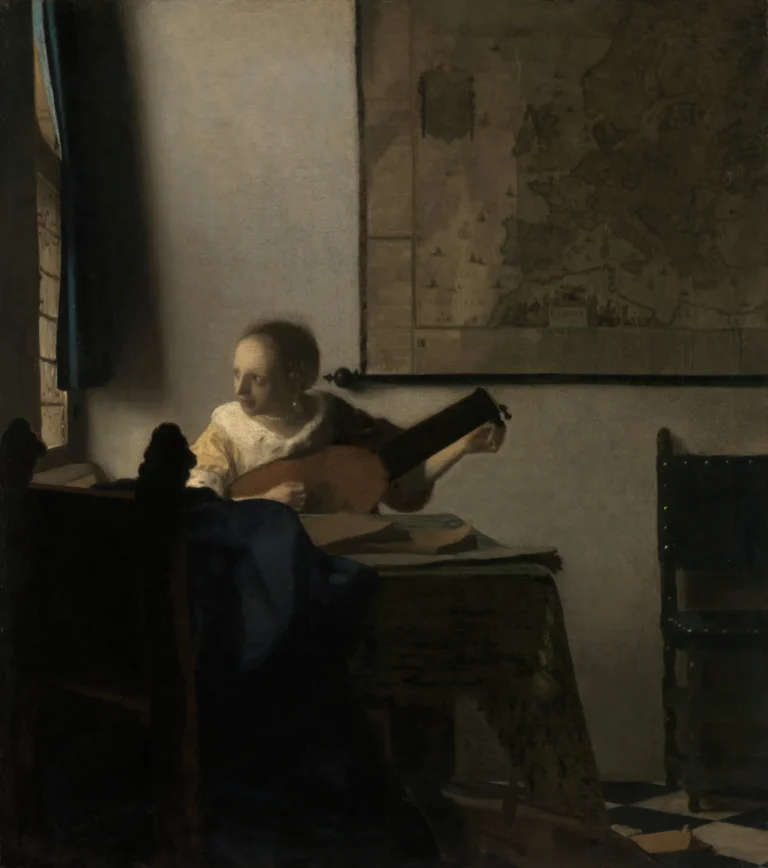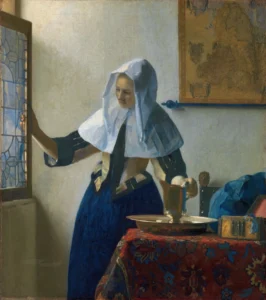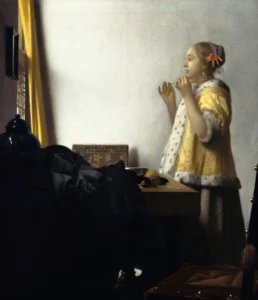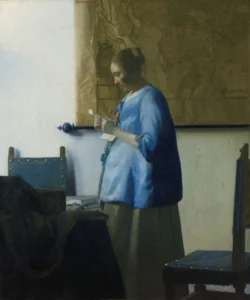Young Woman with a Lute (1662–63)
Created around 1662-1663 by the Dutch master Johannes Vermeer, Young Woman with a Lute presents a serene domestic scene where a young woman, dressed elegantly in a yellow jacket and adorned with pearl earrings, tunes her lute by the light of a window. The intricacies of the painting reveal Vermeer’s delicate handling of light and texture while evoking themes of virtue, expectation, and the nuances of musical engagement. With its rich symbolism and intimate composition, this captivating artwork exemplifies the height of Vermeer’s artistic prowess and remains a highlight of the Metropolitan Museum of Art.
Around 1662-1663
About the Artwork
The Young Woman with a Lute is a testament to Johannes Vermeer’s genius during the Dutch Golden Age. Painted while he was working in Delft, the young woman’s depiction embodies an idyllic tranquility as she tunes her lute, a symbol of temperance and domesticity. The meticulously arranged elements—the marble floor, the map on the wall, and the scattered songbooks—all contribute to the atmosphere of anticipation. Vermeer’s strategic use of natural light enhances the visual intimacy, inviting the viewer to peer into this moment. The painting also connects to Vermeer’s other works featuring women displaying pearls, weaving a narrative of feminine virtue and artistic expression typical of the period. Since its arrival in the Metropolitan Museum of Art in the early 20th century, it has stood as a beacon of Vermeer’s legacy, drawing admiration from art enthusiasts and scholars alike.
Did You Know
Vermeer frequently depicted women in his works, often showcasing their virtues and daily activities. Young Woman with a Lute fits into a thematic group featuring women engaged in music and leisure, emphasizing the grace and femininity associated with these activities.
The young woman’s large pearl earrings symbolize purity and virtue, aligning with the themes of temperance and femininity that permeate Dutch art of the time. Pearls were highly valued in Vermeer’s paintings, epitomizing both beauty and moral integrity.
Vermeer was a master of capturing light, and in Young Woman with a Lute. the use of natural light streaming through the window creates a soft atmosphere that enhances the intimacy of the scene. His innovative techniques influenced many artists and left a lasting impact on the art world.










